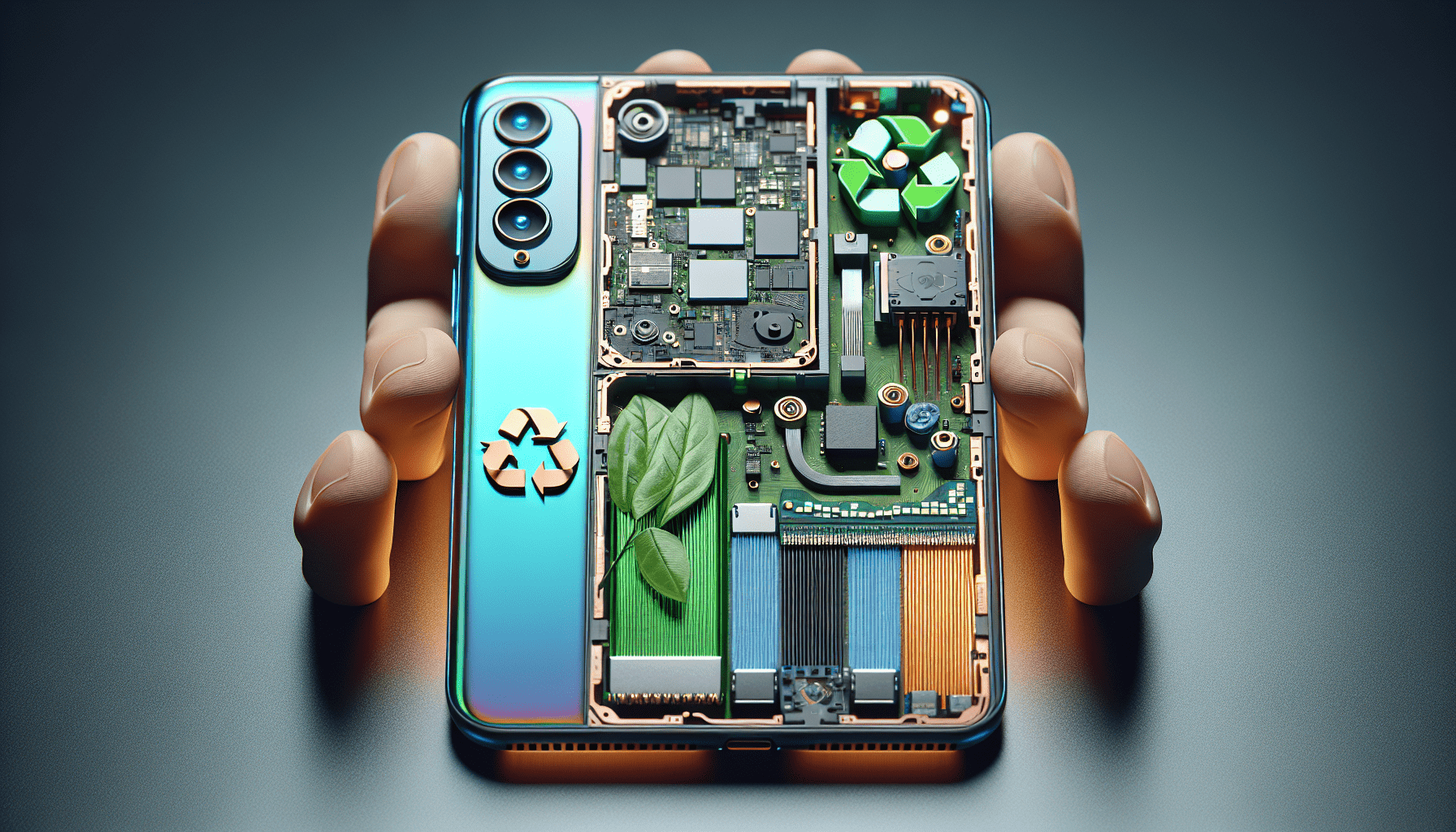Are you tired of feeling overwhelmed by mobile software updates? Look no further! This article is here to simplify the process for you. Whether you’re a tech-savvy individual or just a casual user, we’ve got you covered. In this article, we will break down the ins and outs of mobile software updates, providing you with all the information you need to understand why they are important, how to update your device, and what to expect throughout the process. So sit back, relax, and get ready to become a pro at keeping your mobile device up to date!

Why Mobile Software Updates are Important
Enhanced Security
Mobile software updates are crucial for ensuring the security of your device. As technology continues to advance, so do the tactics employed by hackers and cybercriminals. Software updates often include security patches and updates that address any vulnerabilities or weaknesses that have been discovered. By regularly updating your mobile software, you can protect your personal information and data from potential threats. These updates strengthen the security measures of your device, making it harder for hackers to exploit any loopholes.
Bug Fixes and Performance Improvements
No software is perfect, and mobile operating systems and apps are no exception. Bugs and glitches can affect the performance and functionality of your device, leading to frustrating experiences and decreased efficiency. However, mobile software updates often rectify these issues by providing bug fixes and performance improvements. These updates can help stabilize your device, enhance its speed and responsiveness, and improve the overall user experience.
New Features and Functionality
Mobile software updates also come with the exciting addition of new features and functionalities. Developers are constantly working on improving their apps and operating systems, and software updates bring these advancements directly to your device. Whether it’s a redesigned user interface, enhanced capabilities, or new tools and settings, updates provide you with the latest and most innovative features available. Staying up-to-date with software updates allows you to take full advantage of these new additions and enhance your mobile experience.
Types of Mobile Software Updates
Operating System Updates
Operating system updates, often referred to as firmware updates, are released by the device manufacturer and are responsible for the overall functioning and stability of your mobile device. These updates bring improvements to system performance, security, and the user interface. Operating system updates introduce new features and enhancements to existing functionalities. They provide a fundamental update to the core software, influencing the overall performance of your device.
App Updates
App updates are released by individual app developers and are specific to the applications installed on your mobile device. These updates address bug fixes, improve performance, and introduce new features to the app. App updates can enhance the user experience, provide compatibility with the latest operating systems, and bring improvements based on user feedback. Whether it’s a social media app, a game, or a productivity tool, staying up-to-date with app updates ensures that you have the best version of the apps you rely on.

How to Check for Software Updates
iOS Devices
To check for software updates on an iOS device, follow these steps:
- Open the “Settings” app on your device.
- Scroll down and tap on “General.”
- Select “Software Update.”
- If an update is available, tap “Download and Install.”
Android Devices
To check for software updates on an Android device, follow these steps:
- Open the “Settings” app on your device.
- Scroll down and tap on “System” or “Software Update” (may vary depending on the device).
- Select “Software Update” or “Check for Updates.”
- If an update is available, tap “Download” and then “Install.”
Updating the Operating System
iOS Devices
To update the operating system on an iOS device, follow these steps:
- Make sure your device is connected to Wi-Fi and charged or connected to a power source.
- Go to the “Settings” app on your device.
- Scroll down and tap on “General.”
- Select “Software Update.”
- If an update is available, tap “Download and Install.”
- Follow the on-screen instructions to complete the update process.
Android Devices
To update the operating system on an Android device, follow these steps:
- Ensure that your device is connected to Wi-Fi and has sufficient battery life or is connected to a power source.
- Open the “Settings” app on your device.
- Scroll down and tap on “System” or “Software Update” (may vary depending on the device).
- Select “Software Update” or “Check for Updates.”
- If an update is available, tap “Download” and then “Install.”
- Follow the on-screen instructions to complete the update process.

Updating Apps
iOS Devices
To update apps on an iOS device, follow these steps:
- Open the App Store on your device.
- Tap on your profile picture or the circular icon in the top-right corner.
- Scroll down and under the “AVAILABLE UPDATES” section, you will see a list of apps with available updates.
- Tap “Update” next to each app you want to update individually, or tap “Update All” to update all the apps at once.
- Enter your Apple ID password if prompted.
Android Devices
To update apps on an Android device, follow these steps:
- Open the Google Play Store on your device.
- Tap on the three horizontal lines in the top-left corner to open the menu.
- Select “My apps & games” from the menu.
- Under the “Updates” tab, you will see a list of apps with available updates.
- Tap “Update” next to each app you want to update individually, or tap “Update All” to update all the apps at once.
Optimizing Battery Life During Updates
Ensure Sufficient Battery Percentage
Before initiating a software update, it’s essential to ensure that your device has sufficient battery percentage. Ideally, it is recommended to have at least a 50% charge on your device. Updating with low battery can increase the risk of interruption during the update process, potentially causing issues or incomplete installations.
Connect to Wi-Fi
To conserve your mobile data and ensure a stable and faster download, it is advisable to connect your device to a Wi-Fi network before updating. Software updates can be large in size, and downloading them over a cellular network may consume a significant amount of your data allowance.
Enable Automatic Updates
To simplify the process of keeping your device updated, you can enable automatic updates. This feature allows your device to automatically download and install updates when connected to Wi-Fi, ensuring that you are always running the latest software version without manual intervention.

Troubleshooting Common Update Issues
Insufficient Storage Space
One common issue that may arise during software updates is insufficient storage space on your device. If you encounter a notification stating that there is not enough space to install the update, you can try the following troubleshooting steps:
- Delete unnecessary files, apps, or media from your device to free up storage space.
- Transfer files to a cloud storage service or an external storage device.
- Connect your device to a computer and use the computer’s software to manage and delete files.
Slow or Failed Downloads
Sometimes, software updates may take longer than expected to download or fail to download altogether. To address these issues, you can try the following troubleshooting steps:
- Ensure that you have a stable and reliable internet connection.
- Restart your device and try downloading the update again.
- Clear the cache of the app or system software responsible for downloading updates. This can be done through the settings of your device.
- If the issue persists, contact your device manufacturer or consult online resources for further assistance.
Compatibility Issues
Occasionally, software updates may not be available for older devices due to compatibility issues. If you find that your device is not eligible for the latest software update, it may be due to hardware limitations or the device manufacturer’s decision to discontinue support. In such cases, it is advisable to explore alternative options, such as upgrading to a newer device, to ensure you can benefit from the latest software features and security patches.
The Importance of Backing Up Data
Data Loss Risks
While software updates are essential for the overall functionality and security of your device, there is always a risk of data loss during the update process. Though rare, unforeseen errors or glitches can occur, potentially leading to the loss of personal files, photos, or app data. It is crucial to back up your data regularly to ensure that in the event of an update issue, you can restore your device to its previous state without losing important data.
Methods of Data Backup
To safeguard your data, you can utilize various methods of data backup:
- Cloud Storage: Utilize cloud storage services such as Google Drive, iCloud, or Dropbox to automatically back up your files, photos, and app data. These services provide secure storage and allow you to access your data from multiple devices.
- Computer Backup: Connect your device to a computer and use software like iTunes or Android File Transfer to create a backup of your data on the computer’s hard drive. This method provides a local backup option that you can easily restore if needed.
- External Storage: Use external storage devices like USB drives or external hard drives to manually copy and store important files, photos, and documents. This method provides an offline backup option that can be kept in a secure location.

Best Practices for Software Updates
Read Release Notes
Before installing an update, it is advisable to read the release notes or update details provided by the software developer. The release notes often contain important information about the changes, bug fixes, and new features introduced in the update. By familiarizing yourself with these details, you can make an informed decision about whether to proceed with the update or delay it based on your specific needs.
Provide Feedback and Report Bugs
If you encounter any issues or bugs after updating your device or apps, it is helpful to provide feedback or report the problem to the software developer. This allows them to address the issue and release future updates that resolve the bugs encountered by users. Providing feedback helps improve the overall quality and performance of the software, benefiting both the developer and users.
Keep Your Device Updated
Regularly updating your device’s software, both the operating system and apps, is crucial for maintaining optimal performance and security. By keeping your device updated, you benefit from the latest features, bug fixes, and security enhancements. Set aside time periodically to check for updates and install them promptly to ensure you are running the most stable and secure version available.
Conclusion
Mobile software updates play a significant role in maintaining the security, stability, and functionality of your device. These updates introduce enhanced security measures, address bugs and performance issues, and provide you with new features and functionalities. Whether it’s an operating system update or app updates, ensuring that your software is up to date is essential in today’s technology-driven world.
By following the steps to check for updates, updating your operating system and apps, and optimizing battery life during updates, you can facilitate a smooth and efficient update process. Troubleshooting common issues and backing up your data mitigates the risks associated with software updates. Embracing best practices, such as reading release notes, providing feedback, and consistently updating your device, ensures that you are making the most of your mobile software updates.
Stay proactive and prioritize software updates to reap the benefits of a secure, efficient, and feature-rich mobile experience.



